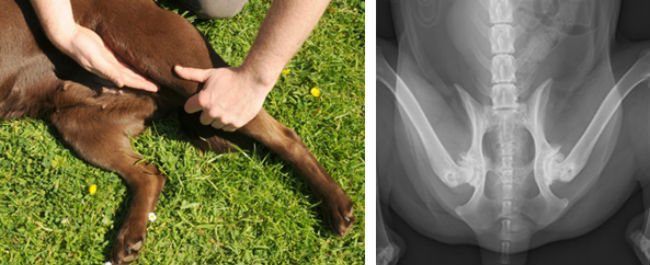About Arthritis
Osteoarthritis (OA), also known as degenerative joint disease, is the most common type of arthritis seen in dogs and is a very common cause of chronic pain, particularly in older dogs.
OA is a slowly progressing disease where the cartilage in the dog’s joints breaks down and causes friction between the bones resulting in outgrowths of new bone forming; known as osteophytes.
Osteophytes can be a source of pain, loss of joint function and cause of clinical symptoms.
OA in dogs is almost always secondary to an initial abnormality such as trauma to the joint or old injuries. In some cases congenital or metabolic diseases contribute to the development of OA for example, osteochondrosis, hip and elbow dysplasia. OA is not a static disease, pain will depend on recent activity level, recent medication and even weather. Dogs with OA will naturally cycle through good and bad spells. For further information about joint changes associated with osteoarthritis and clinical signs that occur in dogs with OA see our useful links.
Osteoarthritis and pain
Osteoarthritis in dogs causes chronic pain, manifest as reduced mobility, behavioral changes and altered activity leading to a decrease in quality of life. Chronic pain is described in human medicine as pain that has lasted longer than 3 months or as pain that persists where healing has occurred. It is probable that chronic pain is well established by the time OA is diagnosed, although at present it is difficult to get a detailed picture from our dogs as they can’t give us a description of their pain experience.
Treatments are available to manage pain associated with osteoarthritis in dogs although, very little is understood about the nature of this pain and how it impacts upon their life.
Signs of osteoarthritis
The signs of OA are not always easy to detect in dogs due to differences between individual animals. All dogs react differently to pain depending on factors such as, age, general health and breed. It is not uncommon for signs to be misinterpreted as slowing down due to old age.
Observe your dog closely for signs such as;
- Difficulty jumping up into the car or onto the sofa / bed
- Stiffness after walks
- Difficulty walking up stairs
- Reduced willingness to exercise or play
- Lameness or limping
- Pain or soreness upon being touched
- Behavioural or character changes such as withdrawal or aggression
